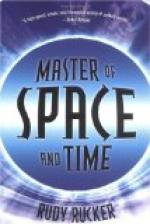It was decided that the cable should, be laid by one vessel, instead of endeavoring to work from two as in the past. Happily, a boat was available which was fitted to carry this enormous burden. This was the Great Eastern, a mammoth vessel far in advance of her time. This great ship of 22,500 tons had been completed in 1857, but had not proved a commercial success. The docks of that day were not adequate, the harbors were not deep enough, and the cargoes were insufficient. She had long lain idle when she was secured by the cable company and fitted out for the purpose of laying the cable, which was the first useful work which had been found for the great ship. The 2,300 miles of heavy cable was coiled into the hull and paying-out machinery was installed upon the decks. Huge quantities of coal and other supplies were added.
Capt. James Anderson of the Cunard Line was placed in command of the ship for the expedition, with Captain Moriarty, R.N., as navigating officer. Professor Thomson and Mr. C.F. Varley represented the Atlantic Telegraph Company as electricians and scientific advisers. Mr. Samuel Canning was engineer in charge for the contractors. Mr. Field was also on board.
It was on July 23, 1865, that the expedition started from the Irish coast, where the eastern end of the cable had been landed. Less than a hundred miles of cable had been laid when the electricians discovered a fault in the cable. The Great Eastern was stopped, the course was retraced, and the cable picked up until the fault was reached. It was found that a piece of iron wire had in some way pierced the cable so that the insulation was ruined. This was repaired and the work of laying was again commenced. Five days later, when some seven hundred miles of cable had been laid, communication was again interrupted, and once again they turned back, laboriously lifting the heavy cable from the depths, searching for the break. Again a wire was found thrust through the cable, and this occasioned no little worry, as it was feared that this was being done maliciously.
It was on August 2d that the next fault was discovered. Nearly two-thirds of the cable was now in place and the depth was here over one mile. Raising the cable was particularly difficult, and just at this juncture the Great Eastern’s machinery broke down, leaving her without power and at the mercy of the waves. Subjected to an enormous strain, the precious cable parted and was lost. Despite the great depth, efforts were made to grapple the lost cable. Twice the cable was hooked, but on both occasions the rope parted and after days of tedious work the supply of rope was exhausted and it was necessary to return to England. Still another cable expedition had ended in failure.
Field, the indomitable, began all over again, raising additional funds for a new start. The Great Eastern had proved entirely satisfactory, and it was hoped that with improvements in the grappling-gear the cable might be recovered. The old company gave way before a new organization known as the Anglo-American Telegraph Company. It was decided to lay an entirely new cable, and then to endeavor to complete the one partially laid in 1865.




